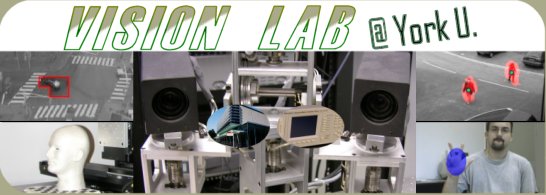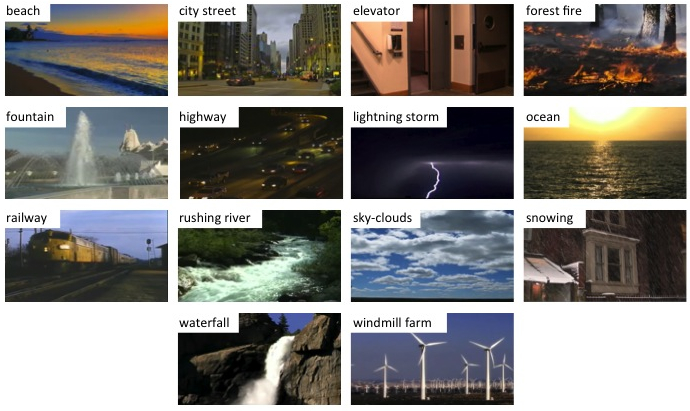
 |
|||||||
Natural scene classification is a fundamental challenge in the goal of automated scene understanding. By far, the majority of studies have limited their scope to scenes from single image stills and thereby ignore potentially informative temporal cues. This work is concerned with determining the degree of performance gain in considering short videos for recognizing natural scenes. Towards this end, the impact of multi-scale orientation measurements on scene classification is systematically investigated, as related to:
In addition, a new
data set (YUPENN Dynamic Scenes) is
introduced that contains 420 image
sequences spanning fourteen scene
categories, with temporal scene
information due to objects and surfaces
decoupled from camera-induced ones. This
data set is used to evaluate
classification performance of the various
orientation-related representations, as
well as state-of-the-art alternatives. Approach
There are two key parts to the analysis
of dynamic scene recognition considered in
this work (see Approach overview
above):
ResultsEvaluation
was conducted on two data sets: (i)
Maryland "In-the-Wild and (ii) the new YUPENN Dynamic
Scenes. Since the Maryland
data set contains large camera motions and
scene cuts, it is difficult to understand
whether classification performance of
approaches depends on their success in
capturing underlying scene structure vs.
characteristics induced by the
camera. To shed light on this
question, the YUPENN
dataset is introduced which contains
a wide variety of dynamic scenes captured
from stationary cameras. It is found
that spacetime oriented energies designed
to capture both spatial appearance and
temporal dynamics are the best performer
on the stabilized data set. Overall,
the spacetime oriented energy feature
consistently characterizes dynamic scenes
whether operating in the presence of
strictly scene dynamics (stabilized case)
or when confronted with overlaid,
non-trivial camera motions (in-the-wild
case). The alternative approaches
considered are less capable of such wide
ranging performance.
Supplemental Material
Related Publications
|
|||||||
 |

